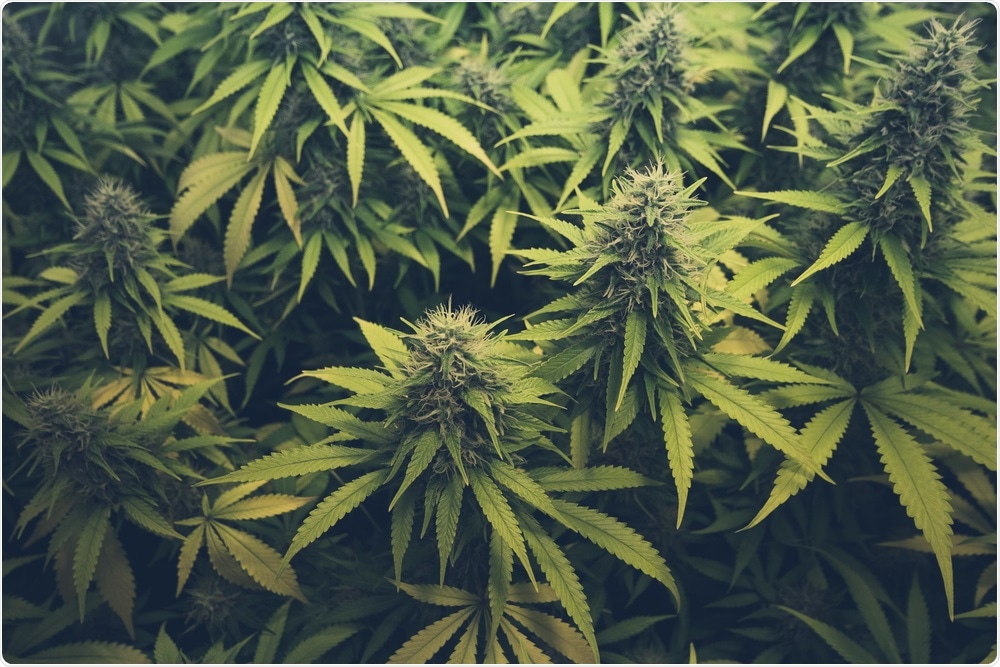As the legal regulations on the use of cannabis continue to become more lenient around the world, researchers have become increasingly interested in establishing techniques that will meet the growing demand to harvest this plant.
The Cannabis sativa L. plant is well known for its terpenic alkylresorcinol compounds, which are better known as the cannabinoids. To date, over 120 different cannabinoids have been isolated, the most notably of which include tetrahydrocannabinol (THC) and cannabidiol (CBD).
Despite the large number of cannabinoids present in the Cannabis plant, there remains a limiting understanding on the biosynthetic pathway of these compounds outside of its most abundant compounds.
To this end, the major phytocannabinoids of THC and CBD have been shown to originate from an initial condensation of olivetolic acid (OA) and gernaylpyrophosphate (GPP) to yield cannabigerolic acid (CBGA). The enzyme responsible for this reaction is an aromatic prenyltransferase known as geranyl pyrophosphate: olivetolate geranyltransferase (GOT).
CBGA gives rise to two different flavin adenine dinucleotide (FAD) oxidases including tetrahydrocannabinolic acid (THCA) synthase and cannabidiolic acid (CBDA) synthase), which both allow for the production of THCA and CBDA, respectively.
 hanohiki | Shutterstock
hanohiki | Shutterstock
In vitro culturing of cannabis
The different pharmacological effects associated with the cannabinoids present within the cannabis plant, particularly THC and CBD, have led researchers to become increasingly interested in producing these products for commercial purposes.
THC, for example, is associated with causing certain analgesic, antispastic and psychoactive activities due to its ability to target the CB1 receptor located in the central nervous system. CBD is also well known for its anti-inflammatory and anti-epileptic properties.
With these promising therapeutic effects in mind, combined with the knowledge that has been gathered on how cannabinoids are naturally synthesized by the cannabis plant, various strategies have been made towards achieving the metabolic engineering of cannabinoids.
While the in vitro culturing of cannabis has not produced significant product quantities as a result of a hypothesized lack of compartmentalization that is typically required by cannabinoids, the use of Pichia pastoris to produce THCA synthase has shown more promising results. When applied in a cell-free two-liquid phase reactor, the Pichia pastoris plant has exhibited an increased synthesis of THCA.
Will metabolic engineering ever become commercially viable?
Despite the vast amount of research that has been performed on investigating the biosynthesis and potential metabolic engineering of cannabinoids, no current technique has been capable of achieving the same yield quantities as the native cannabis plant species.
Researchers in this area are hopeful that the increased leniency on cannabis laws around the world will allow for a greater amount of both genomic and metabolomics research to be performed on the cannabis plant. The scientific community is hopeful that future elucidation of the full biosynthetic pathways of cannabinoids will promote the discovery of novel compounds for various medical purposes.
Journal reference:
Scossa, F., Benina, M., Alseekh, S., Zhang, Y., & Fernie, A. R. (2018). The Integration of Metabolomics and Next-Generation Sequencing Data to Elucidate the Pathways of Natural Product Metabolism in Medicinal Plants. Planta Medica. DOI: 10.1055/a-6030-1899.